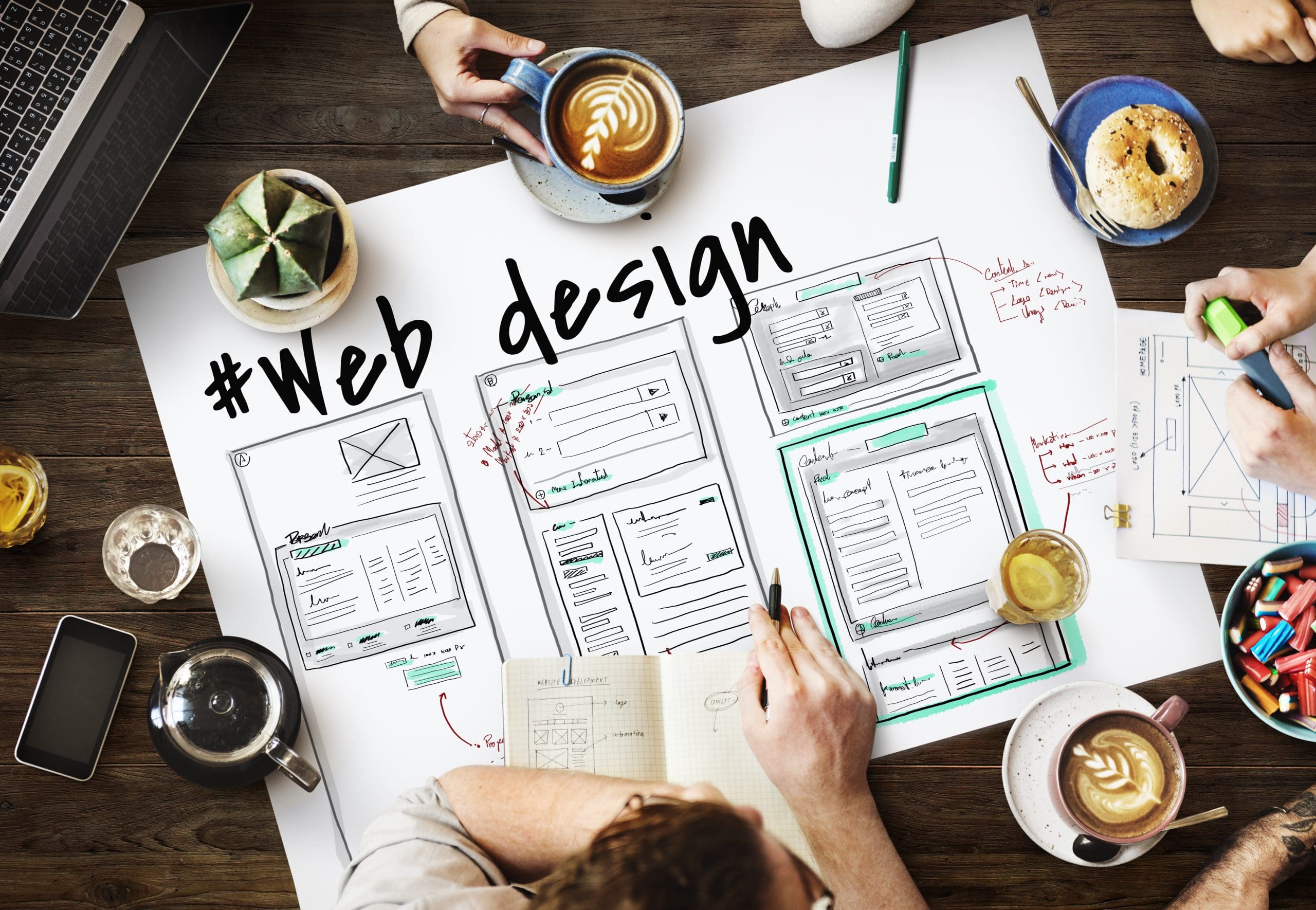Why optimized websites matter for every agency for web design client
Wiki Article
The Relevance of User Experience in Efficient Web Design Approaches
User experience (UX) functions as a cornerstone in efficient web design techniques. It forms how users connect with a site, affecting their fulfillment and possibility of returning. A well-designed UX can boost interaction via user-friendly navigation and responsive formats. Overlooking these aspects might lead to aggravation and increased bounce rates. Comprehending the details of UX is vital for designers intending to produce engaging electronic experiences that reverberate with varied audiences. What elements genuinely drive effective user interaction?Comprehending User Experience and Its Influence On Design
Although user experience (UX) is usually regarded as a simple element of web design, it fundamentally forms just how users engage with a site. UX includes all aspects of the user's interaction, including usability, access, and overall complete satisfaction. A positive UX fosters engagement, motivating users to explore the site and return in the future. On the other hand, a negative experience can cause frustration, leading to high bounce rates and lost opportunities for conversion.Layout elements like design, navigating, and web content company play essential duties in shaping this experience. Efficient UX layout expects user needs and choices, making sure that details is visually appealing and quickly obtainable. Furthermore, understanding user habits with analytics can offer valuable insights, informing layout decisions that boost use. Ultimately, a complete understanding of UX permits designers to develop sites that not only draw in individuals however also advertise meaningful interactions that line up with service objectives and user assumptions.
Secret Concepts of Efficient User Experience
Reliable user experience hinges on numerous key principles that boost web site functionality and engagement. Instinctive navigating style, responsive layout basics, and the value of aesthetic pecking order are vital components that add to a smooth communication in between customers and web content. Comprehending these concepts permits developers to create even more easily accessible and user-friendly electronic atmospheres.Intuitive Navigation Layout
Instinctive navigating design serves as an essential gateway to their total experience when users run into a site. Effective navigation permits individuals to easily find the info they look for, enhancing their communication with the site. Key principles include clear labeling, logical company, and consistent positioning of navigation aspects. Tags must be simple, allowing users to predict the content they will find. A well-structured power structure assists users understand the partnership between different sections, guiding them through the web site seamlessly. Furthermore, responsive food selections and easily accessible web links add to a fluid experience across devices. By prioritizing instinctive navigating, developers can substantially minimize user stress and boost engagement, inevitably promoting a positive understanding of the site and its content.Receptive Layout Basics
A well-structured navigation system normally brings about the requirement for a receptive design, which is important in today's varied digital landscape. A responsive format guarantees that websites feature effortlessly across various gadgets, including smart devices, tablet computers, and desktops. This versatility boosts user experience by allowing content to be aesthetically systematic and easily accessible, no matter display size. Trick concepts of responsive style consist of liquid grids, flexible photos, and media inquiries, which facilitate ideal watching. Additionally, focusing on touch-friendly aspects improves communication on mobile gadgets. By implementing a responsive format, designers can suit customers' requirements, decrease bounce prices, and rise involvement. Inevitably, a well-executed receptive layout cultivates a favorable user experience, urging visitors to explore the web site further.Visual Hierarchy Relevance
Aesthetic power structure plays an important function in assisting individuals with a website, making sure that vital details records their focus initially. By strategically using dimension, shade, comparison, and spacing, developers can develop a clear path for individuals to comply with. Bigger aspects often draw the eye, indicating their value, while contrasting shades can highlight phone call to action. In addition, regular alignment and group of relevant web content boost understanding, making navigation instinctive. Effective use visual hierarchy not just improves use however likewise supports the general visual of the website, promoting a favorable user experience. When users can easily determine the most important details, they are more probable to involve with the web content, causing increased fulfillment and interaction with the site.The Role of Usability in Web Design
Functionality plays a necessary role in web design, specifically through navigating simplicity and adherence to ease of access criteria. Reliable navigating improves user fulfillment by enabling site visitors to locate info rapidly and without effort. Meeting accessibility criteria guarantees that all individuals, regardless of their abilities, can efficiently connect with the site.Navigation Simpleness
Simplicity in navigating stands as a keystone of efficient web design, greatly affecting user experience. A structured navigating system enables users to discover information promptly and with ease, reducing irritation and improving fulfillment. Clear labeling and logical structure are necessary aspects, assisting individuals effortlessly via the site. Redundant web links or extremely complex food selections can confuse customers, bring about enhanced bounce rates. In addition, mobile responsiveness has to be thought about, ensuring navigation remains straightforward across gadgets. Focusing on essential web pages and decreasing clutter even more supports user involvement. Reliable navigating not only fosters a positive experience but additionally motivates individuals to explore the website extra completely, ultimately leading to greater conversion rates. Hereof, navigation simplicity offers as an important element in the overall efficiency of web design techniques.Ease of access Standards
User involvement is significantly boosted when internet sites abide by availability requirements, making sure that all individuals, despite their abilities, can navigate and communicate properly. Compliance with these requirements not only broadens the target market yet likewise boosts overall user contentment. Easily accessible layout includes functions such as text choices for pictures, key-board navigation, and sufficient color comparison, which assist in use by people with specials needs. On top of that, executing these criteria can positively affect search engine optimization (SEARCH ENGINE OPTIMIZATION) by boosting website structure and quality. As web design advances, prioritizing ease of access comes to be necessary in fostering a comprehensive digital atmosphere. By embracing these criteria, designers add to a more fair net, eventually browse around here driving user commitment and engagement.Relevance of Responsive Design for User Involvement
As customers increasingly gain access to websites with a range of tools, the value of receptive layout comes to be paramount for involving customers properly. Receptive design assurances that a website adjusts seamlessly to various screen sizes, giving an excellent watching experience no matter of the gadget utilized. This versatility improves user engagement by promoting less complicated navigation and communication with content.When users experience a website that why not try here is responsive, they are more most likely to stay much longer, discover additionally, and return in the future. A properly designed responsive design reduces the stress commonly connected with zooming and scrolling on smaller displays, thereby lowering bounce prices. In addition, responsive style can positively impact search engine rankings, as online search engine prioritize mobile-friendly websites. In today's electronic landscape, where mobile use remains to rise, applying responsive style is not just valuable, however vital for preserving user interaction and guaranteeing a favorable experience throughout all gadgets.
Enhancing Load Times for Better User Fulfillment

To improve tons times, internet developers should prioritize maximizing photos, leveraging browser caching, and minimizing HTTP demands. In addition, employing Material Distribution Networks (CDNs) can quicken content shipment by distributing it across different geographical areas. Streamlining code, such as compressing CSS and JavaScript data, additionally adds to quicker loading rates.
Ultimately, a dedication to enhancing tons times not just boosts user satisfaction however also enhances brand loyalty and improves the possibility of repeat gos to. A swift, seamless experience is important for preserving users and cultivating favorable interactions.
The Impact of Visual Pecking Order on User Communication
Visual pecking order acts as an important element in guiding user interaction on an internet site. By organizing material in such a way that focuses on information visually, developers can affect how customers involve and browse with a site. This hierarchy is developed with numerous layout strategies, consisting of size, shade, contrast, and spacing. For circumstances, bigger fonts or vibrant shades accentuate critical elements, such as phone call to action or headings, while suppressed colors and smaller sized typefaces can show secondary details.Reliable visual power structure aids users swiftly recognize what is essential, decreasing cognitive lots and boosting use. It enables instinctive navigating, making it less complicated for individuals click here for info to locate what they need without disappointment. As users connect with a site, a well-structured visual power structure fosters an extra gratifying experience, ultimately causing higher involvement and conversion rates. Developers need to prioritize these principles to create a efficient and user-centered internet setting.
Determining User Experience: Techniques and tools

Often Asked Inquiries
Just How Can I Enhance My Site's User Experience on a Budget?
To boost an internet site's user experience on a spending plan, one can optimize page load rate, simplify navigation, apply responsive style, improve content clearness, and collect user comments for constant refinements, ensuring a gratifying site visitor experience.What Prevail User Experience Errors to Avoid in Web Design?
Typical user experience blunders in web design include cluttered designs, inadequate navigating, slow-moving packing times, lack of mobile responsiveness, disregarding accessibility, inconsistent branding, and falling short to prioritize user responses - Web Design services. Each can considerably impede total site effectiveness
How Often Should I Update My Site for Better User Experience?
Sites must be upgraded consistently, preferably every couple of months, to keep perfect user experience. Constant updates assist address functionality issues, refresh web content, and adapt to transforming user requirements, making sure the site remains appealing and pertinent.
Can User Experience Effect Search Engine Optimization Rankings on My Site?
User experience can significantly impact search engine optimization positions, as online search engine prioritize internet sites that offer smooth navigating, quick filling times, and appealing material. A positive user experience can result in reduced bounce prices and higher search presence.What Role Does Access Play in User Experience Design?
Ease of access plays an important function in user experience style by making sure that all people, no matter capacities, can engage and browse with a web site successfully. This inclusivity boosts total contentment and engagement amongst diverse individuals.User experience (UX) is frequently viewed as a simple facet of internet layout, it fundamentally forms just how customers communicate with a website. User engagement is significantly enhanced when web sites stick to accessibility requirements, guaranteeing that all individuals, no matter of their capacities, can browse and engage properly. Determining user experience (UX) is essential for comprehending just how effectively a web site meets the requirements of its customers. Furthermore, use screening, where genuine individuals browse the site while observers keep in mind difficulties, supplies direct feedback on user experience. Typical user experience errors in web style include messy layouts, poor navigation, slow-moving filling times, lack of mobile responsiveness, disregarding access, inconsistent branding, and falling short to prioritize user responses.
Report this wiki page